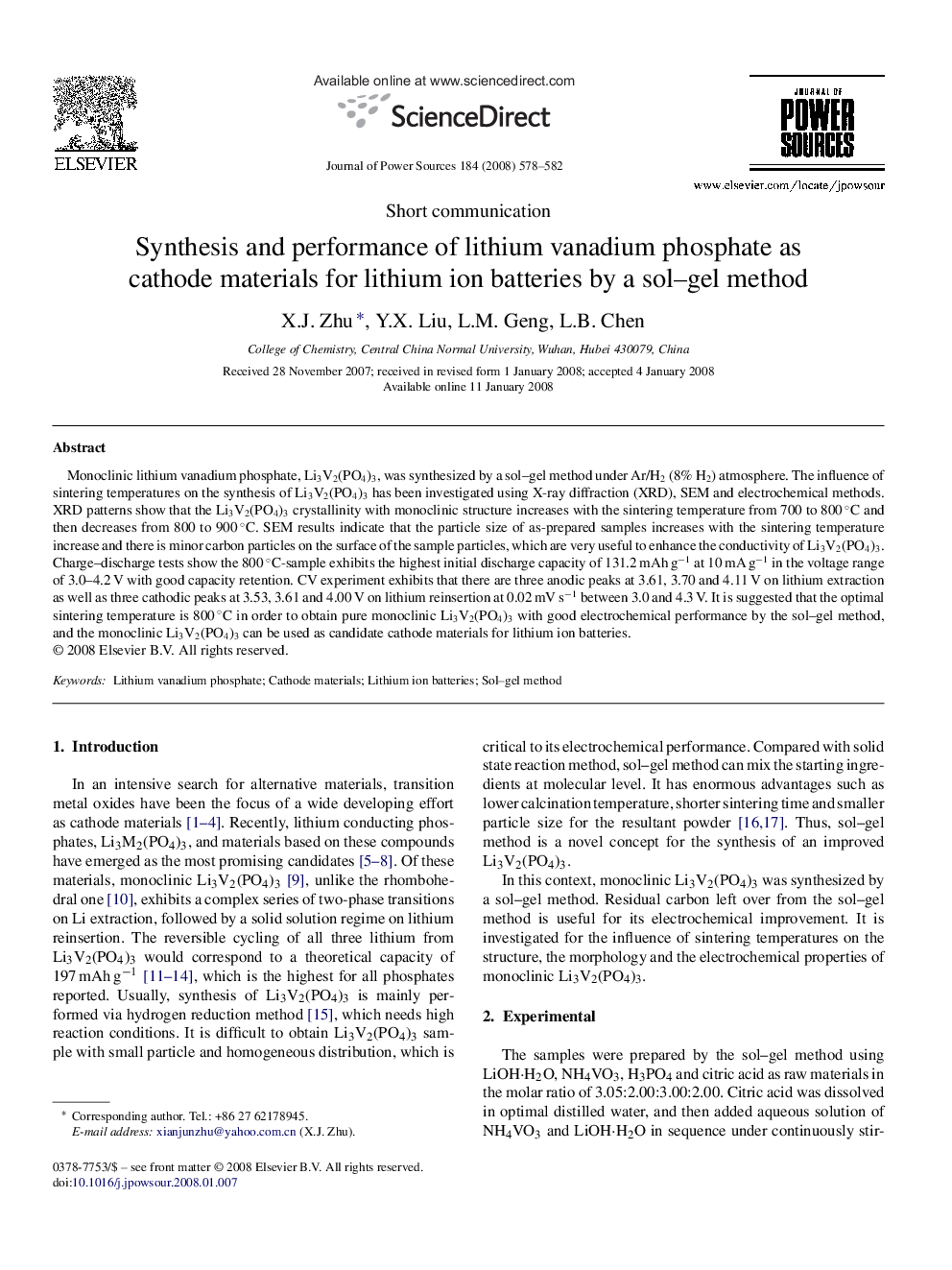| Article ID | Journal | Published Year | Pages | File Type |
|---|---|---|---|---|
| 1294526 | Journal of Power Sources | 2008 | 5 Pages |
Monoclinic lithium vanadium phosphate, Li3V2(PO4)3, was synthesized by a sol–gel method under Ar/H2 (8% H2) atmosphere. The influence of sintering temperatures on the synthesis of Li3V2(PO4)3 has been investigated using X-ray diffraction (XRD), SEM and electrochemical methods. XRD patterns show that the Li3V2(PO4)3 crystallinity with monoclinic structure increases with the sintering temperature from 700 to 800 °C and then decreases from 800 to 900 °C. SEM results indicate that the particle size of as-prepared samples increases with the sintering temperature increase and there is minor carbon particles on the surface of the sample particles, which are very useful to enhance the conductivity of Li3V2(PO4)3. Charge–discharge tests show the 800 °C-sample exhibits the highest initial discharge capacity of 131.2 mAh g−1 at 10 mA g−1 in the voltage range of 3.0–4.2 V with good capacity retention. CV experiment exhibits that there are three anodic peaks at 3.61, 3.70 and 4.11 V on lithium extraction as well as three cathodic peaks at 3.53, 3.61 and 4.00 V on lithium reinsertion at 0.02 mV s−1 between 3.0 and 4.3 V. It is suggested that the optimal sintering temperature is 800 °C in order to obtain pure monoclinic Li3V2(PO4)3 with good electrochemical performance by the sol–gel method, and the monoclinic Li3V2(PO4)3 can be used as candidate cathode materials for lithium ion batteries.
